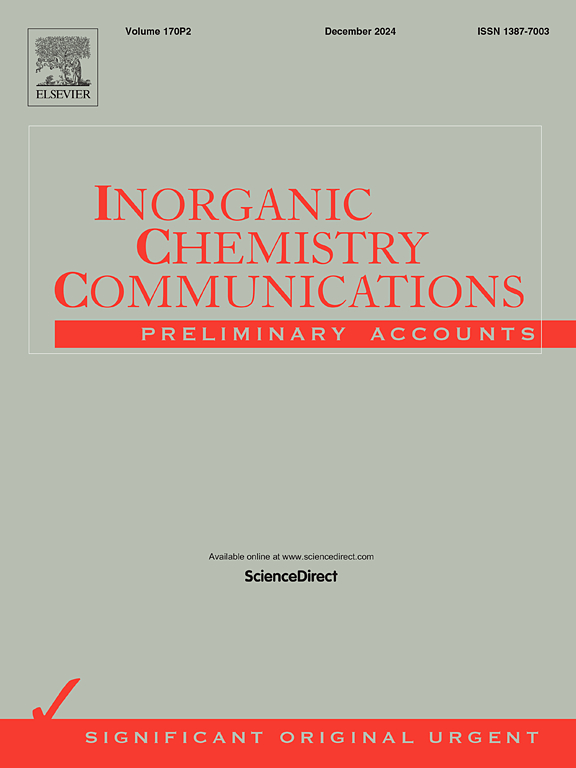Tailoring MoSe2-hybrid polymer composites for optimized electrocatalytic activity in dye-sensitized solar cells (DSSCs)
IF 4.4
3区 化学
Q1 CHEMISTRY, INORGANIC & NUCLEAR
引用次数: 0
Abstract
Polymers have consistently proven to be a convenient option for enhancing the catalytic characteristics of Molybdenum diselenide. Opting for the correct choice facilitates permanent exfoliation, enhances the available space on the surface, and improves the adaptability of the dichalcogenide. In this study, the researchers utilized two highly advantageous conducting polymers, namely poly(3,4-ethylenedioxythiophene) (PD) and polyaniline (Pn), to enhance the efficiency of MoSe2 in the dye-sensitized solar cell. Optimal percentage is crucial for achieving a uniformly distributed, consistent, and well-separated system that improves the electrocatalytic sites and conductive properties while providing flexibility through PD. Furthermore, PD is employed independently, without the assistance of a secondary polymer. The produced composite’s purity, morphology, and surface area were examined using X-ray diffraction, field emission scanning electron microscopy, and Brunauer-Emmett-Teller analysis. Electrochemical investigations reveal that composites display outstanding electrocatalytic performance, rapid electron transfer rate, and enhanced current flow compared to unadorned materials. The devices’ photovoltaic performance was assessed by employing a typical solar simulator set at an intensity of 1 Sun (AM 1.5 G). The electrochemical investigation of the fabricated hybrid system demonstrates the efficacy of a high level of electrocatalysis and excellent device performance with a photoconversion efficiency of 8.65 %. This makes it an effective and affordable choice for a counter electrode in DSSCs.

求助全文
约1分钟内获得全文
求助全文
来源期刊

Inorganic Chemistry Communications
化学-无机化学与核化学
CiteScore
5.50
自引率
7.90%
发文量
1013
审稿时长
53 days
期刊介绍:
Launched in January 1998, Inorganic Chemistry Communications is an international journal dedicated to the rapid publication of short communications in the major areas of inorganic, organometallic and supramolecular chemistry. Topics include synthetic and reaction chemistry, kinetics and mechanisms of reactions, bioinorganic chemistry, photochemistry and the use of metal and organometallic compounds in stoichiometric and catalytic synthesis or organic compounds.
 求助内容:
求助内容: 应助结果提醒方式:
应助结果提醒方式:


